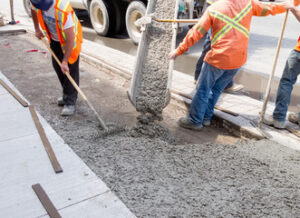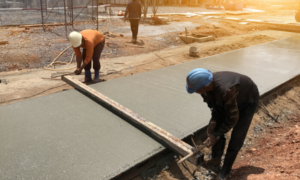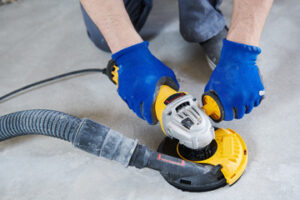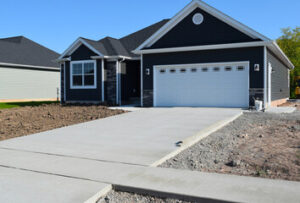Stamped Concrete is a cost-effective way to add an appealing paved surface. Stamped Concrete Colorado Springs can resemble natural stone, tile, or weathered lumber in color and texture.

Its versatility is ideal for patios and entry walkways. But it can also highlight garden elements or enhance a home’s curb appeal.
The cost of stamped concrete varies depending on the type and complexity of the project. This type of decorative Concrete is popular for patios, pool decks, and driveways. It is also suitable for walkways and courtyards. It is a great alternative to natural stone, brick, and tile. It is also durable and affordable. The demand for this type of work is increasing as potential customers learn about it in consumer magazines and at home and garden shows.
Stamped Concrete is Concrete that has been molded to imitate the look of other materials such as slate, flagstone, cobblestone, wood, and brick. It can be poured onto new Concrete or applied as an overlay on existing Concrete. A professional can create a custom design or use standard templates. The final result is an attractive and unique outdoor space that will enhance the curb appeal of your home.
Typically, the price of stamped Concrete is computed per square foot. The size of the area to be covered, the complexity of the pattern and the number of colors are factors that affect the cost. A more complex design, such as a running bond brick, worn rock or stone pattern, is more difficult to imprint and can add significantly to the overall cost of the project.
The color of the Concrete is added during its construction, and the process is called coloring. The Concrete is colored using a chemical product known as a color hardener. The color hardener is injected into the Concrete and mixes with the cement. This allows the color to penetrate deep into the Concrete and resist fading.
After the Concrete has been poured, it is allowed to set. Once it has reached the proper consistency, it is stamped with the desired pattern. This can be done with either a powder color release or a spray-on color release. Powder color release is the more common choice, as it is easy to apply. Spray-on color releases are usually made of a light aromatic-based solvent and require more skill to apply.
Adding a stamped concrete overlay can be a cost-effective way to upgrade your backyard. It is more economical than paving stones or bricks, and it has the same durability as traditional Concrete. It is a good idea to seal the Concrete every two or three years, as this will help prevent cracking and make it last longer.
Durability
The durability of stamped Concrete depends on the design and mix. If the slab will be used for load-bearing surfaces such as a driveway, it must be reinforced to prevent cracking and sinking over time. It is also important to use a high quality concrete mix, as well as a color hardener and sealant. This will protect the Concrete from stains and water damage, making it last longer.
Stamped Concrete is a versatile, durable and affordable paving material that can be used to create decorative and functional surfaces in the yard or garden. It can mimic the look of natural stone, tile, wood or brick, and it is available in a variety of colors and textures. A professional contractor can help you choose a design that complements your home and landscaping.
To get the best results, the Concrete should be poured and leveled before stamping. The contractor will then apply a release agent to the surface of the Concrete to keep it from sticking to the stamps. Then, the contractors will use a special set of large stamps with a design in mind. These stamps are normally made from polyurethane or neoprene. They can be bought from a specialized concrete supply store. The contractor will then place the stamps on the Concrete and press them firmly. After the Concrete is pressed, the contractor will remove the stamps and rinse them off with a hose or pressure washer.
After the Concrete has cured, the contractor will apply a sealant to protect it from water damage and staining. It is recommended to reseal the Concrete every two to three years. A good sealant will prevent the Concrete from becoming chipped or cracked, and it will make it easier to clean.
Although stamped Concrete is a durable material, it can still be vulnerable to freezing and thawing conditions, which can cause it to crack. When this happens, it is often difficult to repair the cracks. In addition, it is susceptible to moisture, which can seep into the smallest cracks and expand as temperatures change. This can lead to unsightly damage and costly repairs. This is one of the primary reasons why some homeowners prefer pre-cast systems such as interlocking concrete pavers and paving slabs. These are more flexible than stamped Concrete, which helps them perform better in cold climates.
Maintenance
A stamped concrete patio is a great addition to any home, and it can increase the value of your property. However, you should be aware that it requires regular maintenance to keep it looking its best. This includes cleaning and resealing the surface to protect it from chemicals, moisture, and sun damage. A good contractor will offer a maintenance program for your patio, and they will recommend the best type of sealer for your needs.
Compared to natural materials like brick pavers or stone, Concrete is much less expensive and easier to maintain. This material is also very durable and can withstand the test of time. It is ideal for use as a paving material for outdoor patios, walkways, driveways, stoops, and pools. It is also ideal for interior floors in homes and business buildings.
There are many different ways to stamp Concrete, and it is important to know how to properly install it. You should choose a contractor who has experience installing stamped Concrete and can provide you with examples of their work. They should also have a good reputation and be licensed and insured. In addition, you should ask your contractor about the type of Concrete they will be using, as this will influence the final outcome.
The advantages of stamped Concrete over other paving materials are its versatility and durability. It can be used to create a variety of styles, including textured borders, compass designs, and custom patterns. It can also be used to create a rustic look for walls and fireplaces. It is also highly customizable and can be stained in a wide variety of colors.
It is recommended that you reseal your stamped Concrete every two to five years. This will help prevent cracking, staining, and color fading. A good quality sealer will also help prevent mold and mildew growth. It is also a good idea to use a non-slip additive to the Concrete, especially around swimming pools.
With the right technique, stamped Concrete can be made to resemble a variety of different materials, including flagstone, slate, and brick. This type of cladding is becoming more and more popular for outdoor spaces, such as patios and driveways. It is also a good choice for interior flooring, such as basements and family rooms.
Design
Stamped Concrete is a decorative alternative to other paving materials like asphalt and brick pavers. It can be made to resemble slate, flagstone, cobblestone, tile, or wood, and comes in an array of color options. It is also a cost-effective paving option and requires less maintenance than other materials.
The demand for stamped Concrete is increasing, as homeowners learn about it in consumer magazines and on home and garden shows. However, it is generally not a DIY project, as there are many things that can go wrong with the process, from sub-base preparation to gauging the proper time to start stamping and actually finishing before the concrete hardens. Contractors who offer this service should be trained in the correct techniques and supervised by an expert to ensure that they do a good job.
Some contractors choose to use integral color, which is dyed directly into the concrete mix during production. This allows the Concrete to be stained and colored before it is poured, resulting in a more consistent color. It is also easier to match from pour to pour and day to day than other coloring methods.
Another option is to use a pre-mixed color stain. This product is available from most home improvement stores, and it is much easier to apply than liquid color. It is a good choice for small projects, such as patios and sidewalks. It can be used to create a variety of colors, including grays and earth tones. It is not as versatile as an integral color, but it can still be effective in creating a unique look for your project.
Another advantage of stamped Concrete is that it is fire-resistant, which makes it a great material for outdoor entertainment areas. It is also shock-resistant and has a non-slip surface, making it an ideal material for pool decks and patios. In addition, it is durable and long-lasting. It can also add value to your property, as it is more attractive than other paving materials and has a one-of-a-kind look that will stand out from the rest of the neighborhood.



